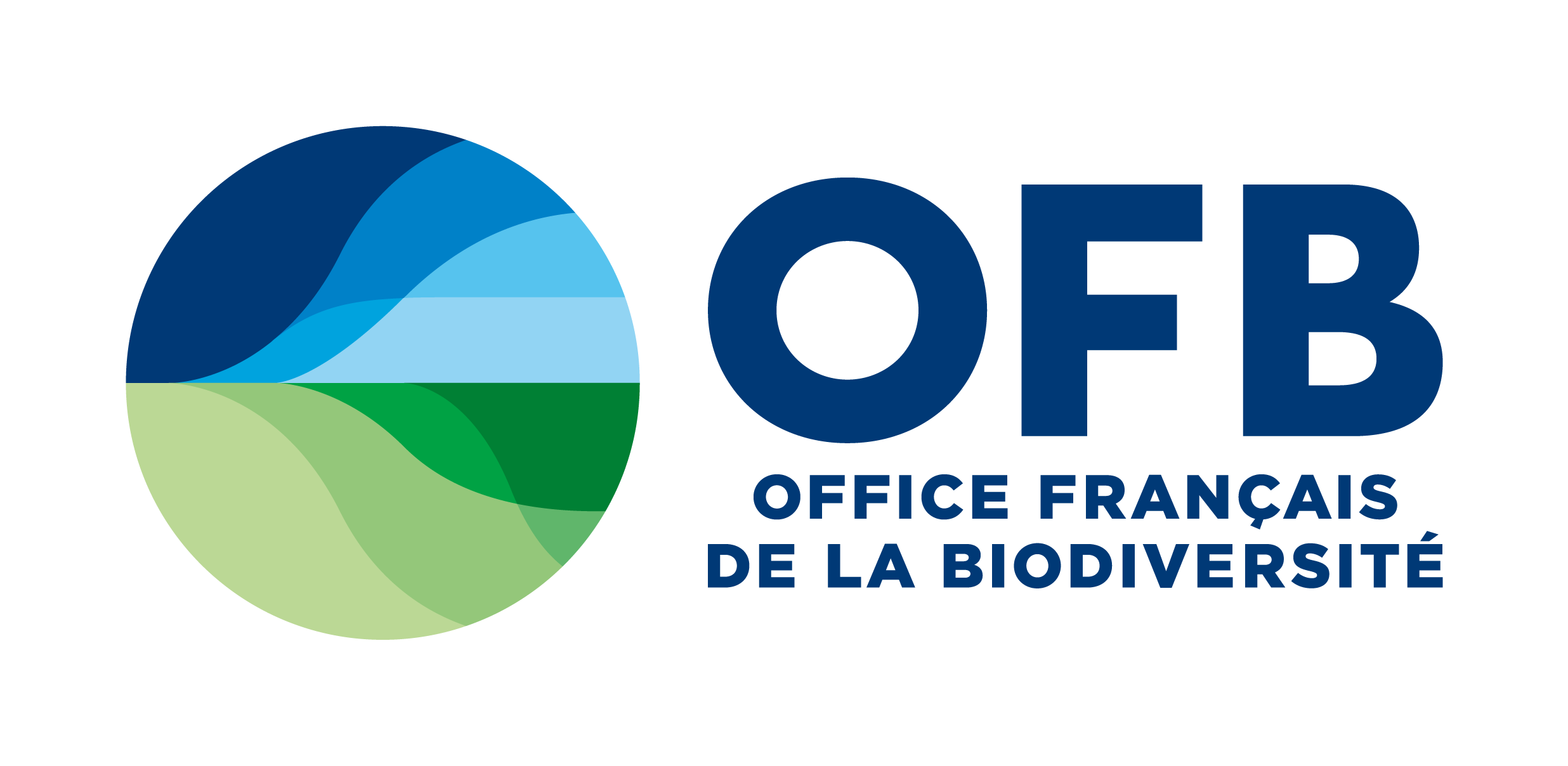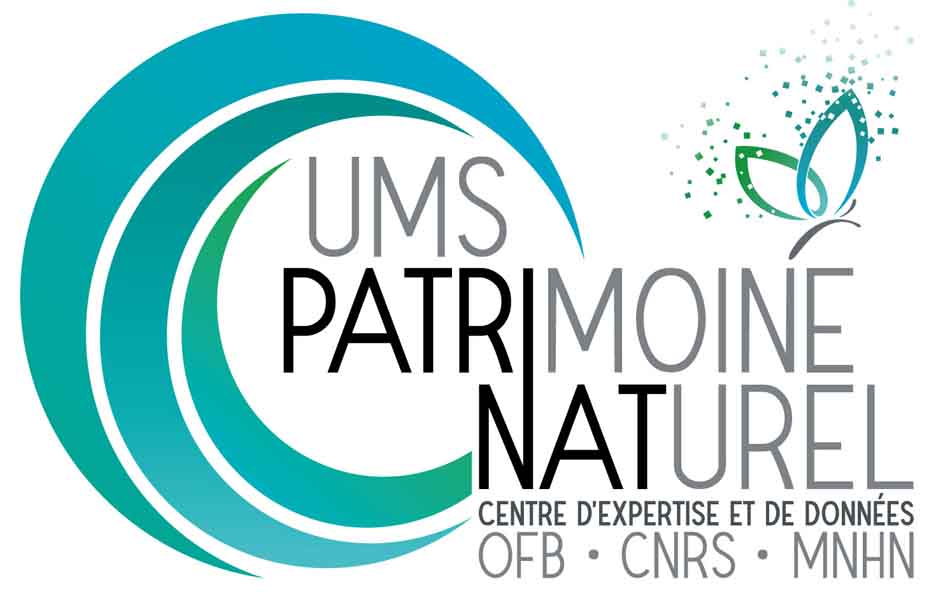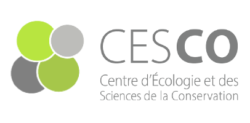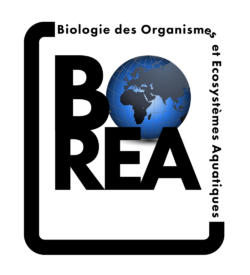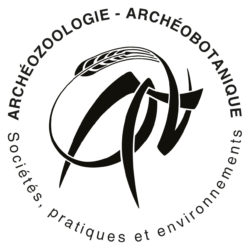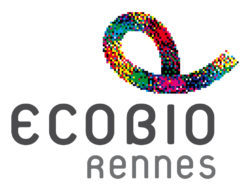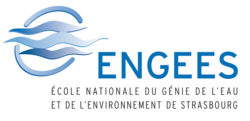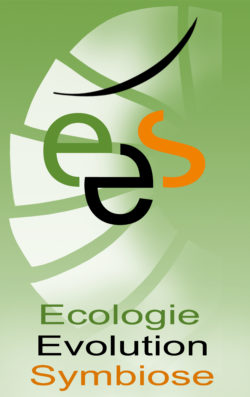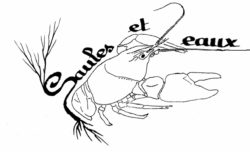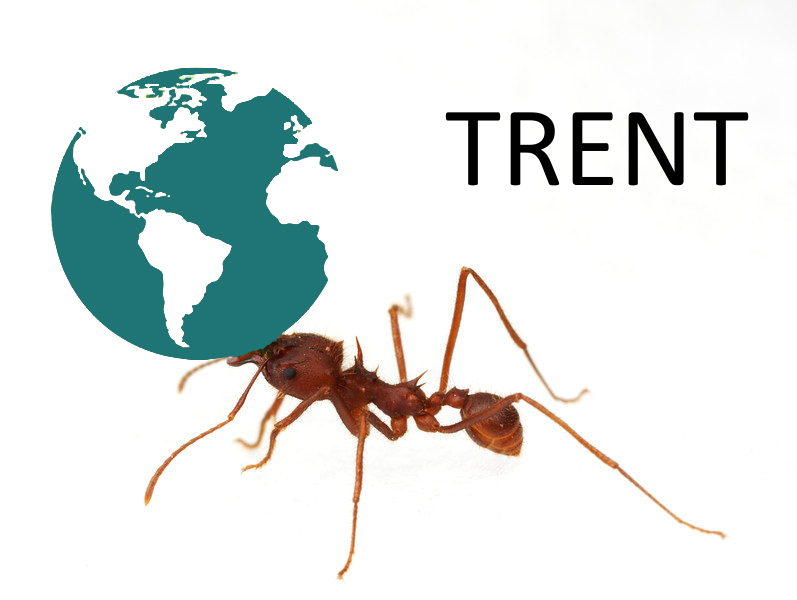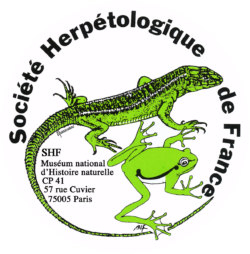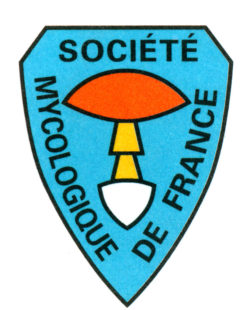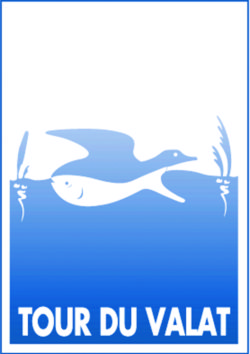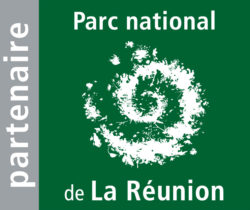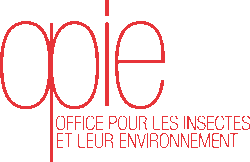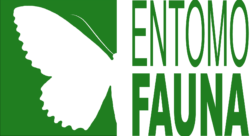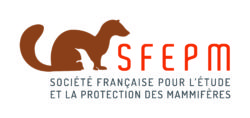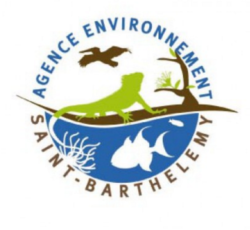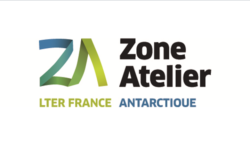Références bibliographiques relatives au groupe des amphibiens
Pour trouver un mot, tapez celui-ci dans la barre de recherche de votre navigateur
Akmentins, M. & D. Cardozo. 2010. American bullfrog Lithobates catesbeianus (Shaw, 1802) invasion in Argentina. Biological Invasions 12(4): 735-737.Lire
Arribas, R., C. D.-P. & Gomez-Mestre, I. 2014. Ecological consequences of amphibian larvae and their native and alien predators on the community structure of temporary ponds. Freshwater biology 59(9): 1996–2008. Lire
Barbosa, F.G., & al. 2017. Invasive American bullfrogs and African clawed frogs in South America. Zoological Studies, 56: 28.Lire
Barreiro, L. B. & Tung, J. 2012. Getting under-and through-the skin: ecological genomics of chytridiomycosis infection in frogs. Mol Ecol 21(13): 3095-3097.Lire
Beck ML, & al. 2017. Repeatability and sources of variation of the bacteria-killing assay in the common snapping turtle. Journal of Experimental Zoology. 2017;327:293–301.Lire
Beckmann, C. & Shine, R. 2011. Toad’s tongue for breakfast: exploitation of a novel prey type, the invasive cane toad, by scavenging raptors in tropical Australia. Biological Invasions 13(6): 1447-1455.Lire
Beckmann, C., & al. 2011. Responses of Australian wading birds to a novel toxic prey type, the invasive cane toad Rhinella marina. Biological Invasions 13(12): 2925-2934.Lire
Bissattini, A. M. & L. Vignoli. 2017. Let’s eat out, there’s crayfish for dinner:American bullfrog niche shifts inside and outside native ranges and the effect of introduced crayfish. Biological Invasions 19(9): 2633-2646.Lire
Bomford, M., & al. 2009. Predicting establishment success for alien reptiles and amphibians: a role for climate matching. Biological Invasions 11(3): 713-724.Lire
Both, C. & Grant, T. 2012. Biological invasions and the acoustic niche: the effect of bullfrog calls on the acoustic signals of white-banded tree frogs. Biol Lett 8(5): 714-716.Lire
Brannelly, L. A., & al. 2017. Non-declining amphibians can be important reservoir hosts for amphibian chytrid fungus. Animal Conservation: n/a-n/a.Lire
Breuil, M. & al. 2012. Salamandra salamandra (Fire Salamander). Distribution. Caribbean herpetology 25:1.Lire
Breuil M. & al. 2009. Modifications du peuplement herpétologique dans les Antilles françaises. Le courrier de la Nature, n°249.Lire
Brown, G., & al. 2013. Road transect surveys do not reveal any consistent effects of a toxic invasive species on tropical reptiles. Biological Invasions 15(5): 1005-1015.Lire
Cabrera-Guzmán, E., & al. 2012. Predation on the eggs and larvae of invasive cane toads (Rhinella marina) by native aquatic invertebrates in tropical Australia. Biological Conservation 153: 1-9.Lire
Cayuela, H., & al. 2013. Multi-event models reveal the absence of interaction between an invasive frog and a native endangered amphibian. Biological Invasions 15(9): 2001-2012.Lire
Choi, R. & Beard, K. 2012. Coqui frog invasions change invertebrate communities in Hawaii. Biological Invasions 14(5): 939-948.Lire
Cogalniceanu, D. & Miaud C. 2004. Variation in life-history traits in Bombina bombina from the lower Danube floodplain. Amphibia-Reptilia 25 : 115-119.Lire
Courant, J., & al. 2018. Assessing the impacts of the invasive frog, Xenopus laevis, on amphibians in western France.Lire
Crossland, M., & al. 2011. The enduring toxicity of road-killed cane toads (Rhinella marina). Biological Invasions 13(9): 2135-2145.Lire
Dejean, T. Miaud C. & Ouellet, M. 2007. Proposition d’un protocole d’hygiène pour réduire les risques de dissémination d’agents infectieux et parasitaires chez les amphibiens lors d’intervention sur le terrain. Bulletin de la Société Herpétologique de France 122 : 40-48.Lire
D’Amore, A., & al. 2009. Do a threatened native amphibian and its invasive congener differ in response to human alteration of the landscape? Biological Invasions 12(1): 145-154.Lire
Dejean, T., & al. 2012. Improved detection of an alien invasive species through environmental DNA barcoding: the example of the American bullfrog Lithobates catesbeianus. Journal of Applied Ecology 49(4): 953-959.Lire
DiGiacopo, D. G., & al. 2019. Interaction between invasive plant leaf litter and NaCl on two model amphibians. Biological Invasions 21(2): 391-403.Lire
Doody, J. S., & al. 2012. Indirect facilitation of a native mesopredator by an invasive species: are cane toads re-shaping tropical riparian communities? Biological Invasions 15(3): 559-568.Lire
Drüke, Y., & Rödder, D. 2017. Feeding ecology of the invasive gecko species Hemidactylus mabouia (Moreau de Jonnès, 1818) (Sauria: Gekkonidae) in São Sebastião (Brazil). Bonn zoological Bulletin 66 (1): 85–93.Lire
Dufresnes, C., & al. 2017. Cryptic invasion of Italian pool frogs (Pelophylax bergeri) across Western Europe unraveled by multilocus phylogeography. Biological Invasions 19(5): 1407-1420.Lire
Ernst, R., & al. 2010. Non-invasive invaders from the Caribbean: the status of Johnstone’s Whistling frog (Eleutherodactylus johnstonei) ten years after its introduction to Western French Guiana. Biological Invasions 13(8): 1767-1777.Lire
Feit, B., & al. 2018. Invasive cane toads might initiate cascades of direct and indirect effects in a terrestrial ecosystem. Biological Invasions 20(7): 1833-1847.Lire
Ficetola, F., & al. 2010. Knowing the past to predict the future: land-use change and the spread of invasive Bullfrogs. Global Change Biology 16 : 528–537. doi: 10.1111j.1365-2486.2009.01957.x.Lire
Ficetola, F.C., & al. 2007. Prediction and validation of the potential global distribution of a problematic alien invasive species – the American bullfrog. Diversity & Distributions, 13: 476-485.Lire
Ficetola, G.F., & al. 2007. Pattern of distribution of the American bullfrog Rana catesbeiana in Europe. Biological Invasions, 9: 767-772.Lire
Glorioso, B. M., & al. 2018. Establishment of the exotic invasive Cuban treefrog (Osteopilus septentrionalis) in Louisiana. Biological Invasions 20(10): 2707-2713.Lire
Goetz, S. M., & al. 2018. Toxic, invasive treefrog creates evolutionary trap for native gartersnakes. Biological Invasions 20(2): 519-531.Lire
Greenlees, M. J., & al. 2018. The establishment and eradication of an extra-limital population of invasive cane toads. Biological Invasions 20(8): 2077-2089.Lire
Holsbeek, G., & al. 2008. A cryptic invasion within an invasion and widespread introgression in the European water frog complex: consequences of uncontrolled commercial trade and weak international legislation. Mol Ecol 17(23): 5023-5035.Lire
Holsbeek, G., & al. 2009. Genetic detection of multiple exotic water frog species in Belgium illustrates the need for monitoring and immediate action. Biological Invasions 12(6): 1459-1463.Lire
Jancowski, K. O., S. A. 2013. Stomach contents from invasive American bullfrogs Rana catesbeiana (= Lithobates catesbeianus) on southern Vancouver Island, British Columbia, Canada. NeoBiota 16: 17-37.Lire
Jolly, C. J., & al. 2016. The impacts of a toxic invasive prey species (the cane toad, Rhinella marina) on a vulnerable predator (the lace monitor, Varanus varius). Biological Invasions 18(5): 1499-1509.Lire
Katz, T. S. & A. J. Zellmer. 2018. Comparison of model selection technique performance in predicting the spread of newly invasive species: a case study with Batrachochytrium salamandrivorans. Biological Invasions 20(8): 2107-2119.Lire
Kelehear, C., & al. 2012. Inadvertent consequences of community-based efforts to control invasive species. Conservation Letters 5(5): 360-365.Lire
Kleeck, M. J. V. & B. S. Holland. 2018. Gut Check: Predatory Ecology of the Invasive Wrinkled Frog (Glandirana rugosa) in Hawai‘i. Pacific Science 72(2): 199-208.Lire
Kraus, F. & Campbell, E. W. 2002. Human-mediated Escalation of a Formerly Eradicable Problem: The Invasion of Caribbean Frogs in the Hawaiian Islands. Biological Invasions 4(3): 327-332.Lire
Kumschick S, & al. 2017. Impact assessment with different scoring tools: How well do alien amphibian assessments match? NeoBiota 33: 53-66.Lire
Lambrey, J. 2012. Caractérisation et suivi d’une population d’espèce introduite dans le PNRL : Le Sonneur à ventre de feu (Bombina bombina), dans le cadre du Plan national d’action en faveur du Sonneur à ventre jaune (Bombina variegata), Conservatoire d’espaces naturels de Lorraine: 75 pp.
Laufer, G., & al. 2018. Current status of American bullfrog, Lithobates catesbeianus, invasion in Uruguay and exploration of chytrid infection. Biological Invasions 20(2): 285-291.Lire
Leivas, P. T., & al. 2012. The Reproductive Biology of the Invasive Lithobates catesbeianus (Amphibia: Anura). Journal of Herpetology 46(2): 153-161.Lire
Lettoof, D. C., & al. 2013. Do invasive cane toads affect the parasite burdens of native Australian frogs? International Journal for Parasitology: Parasites and Wildlife 2: 155-164.Lire
Lillo, F., & al. 2010. Can the introduction of Xenopus laevis affect native amphibian populations? Reduction of reproductive occurrence in presence of the invasive species. Biological Invasions 13(7): 1533-1541.Lire
Llewelyn, J., & al. 2018. Behavioural responses of an Australian colubrid snake (Dendrelaphis punctulatus) to a novel toxic prey item (the Cane Toad Rhinella marina). Biological Invasions 20(9): 2507-2516.Lire
Llewellyn, D., & al. 2011. Reduced investment in immune function in invasion-front populations of the cane toad (Rhinella marina) in Australia. Biological Invasions 14(5): 999-1008.Lire
Lorvelec, O., & al. 2007. Amphibians and reptiles of the French West Indies: Inventory, threats and conservation. Applied Herpetology 4(2): 131-161.Lire
Massary & al. 2018. Liste taxinomique de l’herpétofaune dans l’outre-mer français : II. Collectivité de Saint-Barthélémy. Bull. Soc. Herp. Fr. (2018) 166 : 59-78.Lire
McCann, S., & al. 2017. On the fringe of the invasion: the ecology of cane toads in marginally-suitable habitats. Biological Invasions 19(9): 2729-2737.Lire
Measey, G. J., & al. 2012. Ongoing invasions of the African clawed frog, Xenopus laevis: a global review. Biological Invasions 14(11): 2255-2270.Lire
Medeiros, C. I., & al. 2017. Invasion of the acoustic niche: variable responses by native species to invasive American bullfrog calls. Biological Invasions 19(2): 675-690.Lire
Miaud, C., & al. 2016. Invasive North American bullfrogs transmit lethal fungus Batrachochytrium dendrobatidis infections to native amphibian host species. Biological Invasions 18(8): 2299-2308.Lire
Moreira, F.D. & al. 2017. Breeding in both lotic and lentic habitats explains the invasive potential of the African clawed frog (Xenopus laevis) in Portugal. Aquatic Invasions 12: 1-10.Lire
Murray, R. G., & al. 2015. Relative performance of ecological niche and occupancy models for predicting invasions by patchily-distributed species. Biological Invasions 17(9): 2691-2706.Lire
Nicolas, V., Grandcolas, P., Braux, F., Jourdan, H., Malau, A., Couloux, A., Ohler, A. 2015. Recent species in old islands: the origin of introduced populations of Litoria aurea (Anura: Hylidae) in New Caledonia, Santo and Wallis inferred from mt DNA sequences. Amphibia-Reptilia 36 (1): 65-81. doi:10.1163/15685381-00002978.Lire
O’Donnell, R. P., & al. 2017. Cryptic invasion of Northern Leopard Frogs (Rana pipiens) across phylogeographic boundaries and a dilemma for conservation of a declining amphibian. Biological Invasions 19(3): 1039-1052.Lire
Olson, C. A., & al. 2011. Detection probabilities of two introduced frogs in Hawaii: implications for assessing non-native species distributions. Biological Invasions 14(4): 889-900.Lire
Pitman, C. R. S. 1962. Bird predation by the North American Snapping Turtle, Chelydra serpentina L. Bulletin of the British Ornithologists’ Club. 82: 95-96.
Powell, R., & Hendersen, R. 2012. Island lists of West Indian amphibians and reptiles, Florida Museum of Natural History. 51: 85-166.Lire
Price, S. J., & al. 2017. From fish to frogs and beyond: Impact and host range of emergent ranaviruses.Virology 511: 272-279.Lire
Pujol-Buxó, E., & al. 2013. How does the invasive/native nature of species influence tadpoles’ plastic responses to predators? Oikos 122(1): 19-29.Lire
Reynaud S., & al. 2012. Toxicokinetic of benzo[a]pyrene and fipronil in female green frogs (Pelophylax kl. esculentus). Environmental Pollution 161: 206e214.Lire
Richter-Boix, A., & al. 2012. Effects of the non-native amphibian species Discoglossus pictus on the recipient amphibian community: niche overlap, competition and community organization. Biological Invasions 15(4): 799-815.Lire
Schalk, C. M., & al. 2018. Functional distance and establishment of non-native species with complex life cycles. Biological Invasions 20(8): 1945-1952.Lire
Sherman, E. M. & Leaché, A. D. 2013. Molecular Identification of A Hitchhiking Frog. Northwestern Naturalist 94(1): 81-84.Lire
Shine, R. 2014. A review of ecological interactions between native frogs and invasive cane toads in Australia. Austral Ecology 39(1): 1-16.Lire
Sin, H., & al. 2007. An invasive frog, Eleutherodactylus coqui, increases new leaf production and leaf litter decomposition rates through nutrient cycling in Hawaii. Biological Invasions 10(3): 335-345.Lire
Silvester, R., & al. 2017. The ecological impact of commercial beehives on invasive cane toads (Rhinella marina) in eastern Australia. Biological Invasions 19(4): 1097-1106.Lire
Smith, R. L., & al. 2017. Different prey resources suggest little competition between non-native frogs and insectivorous birds despite isotopic niche overlap. Biological Invasions 19(3): 1001-1013.Lire
Société herpétologique de France. 2016. Connaître, comprendre, anticiper, gérer, partager. Le LIFE CROAA, un programme sur les Amphibiens, pour préserver les espèces autochtones des espèces exotiques envahissantes. Plaquette d’information. Lire
Société herpétologique de France. 2018. Communiqué de Presse. Répartition du Xénope lisse en France. 3p. Lire
Stöck, M., & al. 2012. Cryptic diversity among Western Palearctic tree frogs: Postglacial range expansion, range limits, and secondary contacts of three European tree frog lineages (Hyla arborea group). Molecular Phylogenetics and Evolution 65(1): 1-9.Lire
Tingley, R., & al. 2019. Environmental DNA sampling as a surveillance tool for cane toad Rhinella marina introductions on offshore islands. Biological Invasions 21(1): 1-6.Lire
Thirion, J. M., & al. 2012. Le xénope lisse Xenopus laevis : perspective pour une lutte efficace et maîtrisée. 35 dp.
Tinsley, R. C., & al. 2015. Extinction of an introduced warm-climate alien species, Xenopus laevis, by extreme weather events. Biological Invasions 17(11): 3183-3195.Lire
Vogt S, & al. 2017. Competition and feeding ecology in two sympatric Xenopus species (Anura: Pipidae) PeerJ 5:e3130Lire
Vrcibradic, D. 2017. Trichodactylus dentatus (Crustacea, Decapoda, Trichodactylidae) and other prey of a large adult of the exotic American bullfrog, Lithobates catesbeianus (Ranidae), caught in a disturbed habitat in southeastern Brazil. Herpetology Notes 10: 375-378.Lire
Wijethunga, U., & al. 2016. Far from home: responses of an American predator species to an American prey species in a jointly invaded area of Australia. Biological Invasions 18(6): 1645-1652.Lire
Wilson, E. A., & al. 2018. Shared behavioral responses and predation risk of anuran larvae and adults exposed to a novel predator. Biological Invasions 20(2): 475-485.Lire
Winkel, D. & J. Lane. 2012. The invasive cane toad (Bufo marinus) in West New Britain, Papua New Guinea: observations and potential impacts on native wildlife. Biological Invasions 14(10): 1985-1990.Lire
Yokoyama, M. 2012. Reptiles and Amphibians Introduced on St. Martin, Lesser Antilles. 19(4):271-279.Lire


